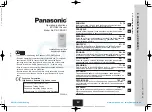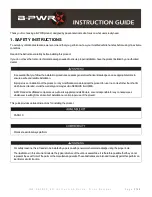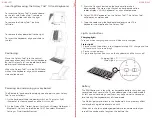
6/10/13 – 11
2
Equipment Needed to Safely Climb Using the Rope Wrench System
Equipment Checklist
Required Equipment
Rope Wrench
Climbing Rope
Friction Hitch
Tether
Carabiner
Harness
Helmet, Boots and Safety Glasses
Back-up descent device such as a carabiner for a
munter hitch.
Optional Equipment
Slack-Tending Pulley
Other Personal Protective Equipment (PPE)
Ascender(s)
Figure 2. Fully Assembled Rope Wrench System
Note: Attach harness to end of carabiner. If desired,
Ascenders could attach to the climbing rope above or
below the system.
Equipment Requirements
Rope Wrench.
Always use the original Rope Wrench
manufactured by ISC. Do not attempt to use a
“home-made” Rope Wrench.
Climbing Rope.
It is recommended that a 11mm to
13mm thick, 16 or 24 strand rope made of nylon,
polyester, polypropylene or kernmantle and that is
approved for arboriculture be used with the Rope
Wrench system. Ultra static climbing ropes are not
recommended. The rope should have just enough
“give” or “bounce” to be comfortable.
Friction Hitch.
It is recommended that a semi-supple,
28 inch long, 8mm to 10mm thick, heat resistant
rope of a different material than the climbing rope be
used for the friction hitch.
Note 1: The above recommendations for the selection
of ropes are general guidelines only. There are many
factors that go into selecting suitable ropes for
climbing. A professional arborist should carefully
consider all the factors present before making a
decision regarding the ropes to be used.
Note 2: It is recommended that each rope used in the
Rope Wrench system be a different color or pattern for
clarity of distinction.
Tether.
It is required that a stiffened tether be used in
conjunction with the Rope Wrench. Stiffened tethers
designed specifically for use with the Rope Wrench
are commercially available. Do not use tethers
made of a brittle material such as acrylic or wood. It
is the responsibility of the climber to select a proper
tether.
DANGER: FREE FALL HAZARD
Do not use a loose or supple tether with the Rope
Wrench. It may become entangled in the Rope Wrench
and cause it to be locked in neutral and release the grip
of the friction hitch. This will lead to free fall resulting in
serious injuries or death.
Figure 3: Dangerous result of using a loose or supple
tether: Rope Wrench is stuck in neutral position and
could release the grip of the friction hitch below it.
Tether
Rope
Wrench
Climbing
Rope
Friction
Hitch
Pulley
Carabiner
Harness
Attachment
Point
Climbing
Rope





























